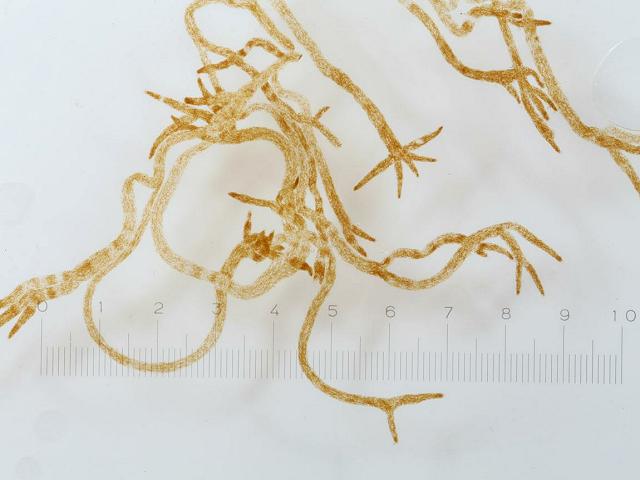
APHOTOMARINE
An educational resource dedicated mainly to the photography
and diversity of marine life that can be found in coastal waters
and intertidal areas of Great Britain and Ireland by David Fenwick.

Berkeleya rutilans (Trentepohl ex Roth) Grunow, 1880 - A Marine diatom (Microalgae images)
Scroll down and rollover titles to change screen image or click on title to view image.
Diatom
Berkeleya rutilans
- with 0.1mm division rule 1
Berkeleya rutilans
- with 0.1mm division rule 1
Diatom
Berkeleya rutilans
- with 0.1mm division rule 2
Diatom
Berkeleya rutilans
- close-up in container 1
Diatom
Berkeleya rutilans
- on algae in lowershore pool 1
Diatom
Berkeleya rutilans
- on algae in lowershore pool 2
Diatom
Berkeleya rutilans
- in container 1
Diatom
Berkeleya rutilans
- close-up of fronds 1
Diatom
Berkeleya rutilans
- close-up of fronds 2
Diatom
Berkeleya rutilans
- epiphyte in lowershore pools 1
Diatom
Berkeleya rutilans
- on Sargassum muticum 1
Diatom
Berkeleya rutilans
- point of attachment 1
Diatom
Berkeleya rutilans
- point of attachment 2
Species found growing epiphytically on red algae in pools on the lowershore at Chimney Rocks, Penzance, Cornwall. 08.01.15 and 04.02.15.
Diatom
Berkeleya rutilans
- attached to hard subtrate 1
Species found growing on hard substrate in pools on the lowershore near the slipway, SW Newlyn Harbour, Newlyn, Cornwall, 19.02.15.
I have been informed by Professor Michael Guiry that Berkeleya rutilans is the most likely species this can be because of the habit of the diatom. It should be noted the only way be to sure of what it is, is to look at the specimen under a scanning electron microscope (SEM).
AlgaeBase is a database of information on algae that includes terrestrial, marine and freshwater organisms.

The main objective of this website is in furthering environmental awareness and education through the medium of photography. To increase awareness and access to the wildlife of the region and help
people find and identify it. Sometimes the difference between species is obvious but many species can only be determined by observing microscopic characteristics that are specific to any one species.